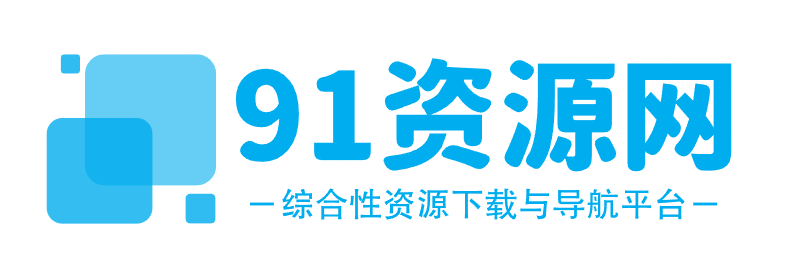laravel开发:如何使用laravel eloquent实现多态关联?多态关联是 Laravel Eloquent 的一项重要功能,它可以使一个模型和多个不同的模型建立关联关系。在实际应用中,处理不同类型的数据相对简单且高效,尤其在数据库设计上非常方便。在本文中,我们将讨论如何使用 Laravel Eloquent 实现多态关联。
一、什么是多态关联?
多态关联是指一个模型和多个不同的模型建立关联关系,可以将其视为对通用类别的引用。它能为许多应用带来便利,如:
图片、音频和视频模型都可以与评论模型建立多态关联,使评论可以应用于多种数据类型。
用户可以与评论模型建立多态关联,并被应用于多种数据类型,如文章、图片、视频等。
订单模型可以与收货地址模型建立多态关联,使订单可以配送到多种地址类型,如家庭、公司、网点等。
二、实现多态关联的方法
下面让我们看看如何使用 Laravel Eloquent 实现多态关联。
首先,我们需要考虑的是数据表的设计。我们需要创建一个中间表,用于存储模型之间的多态关联关系。此表应包含以下列:
id: 表主键 ID;
target_type: 目标模型的类型名称;
target_id: 目标模型的 ID;
source_type: 源模型的类型名称;
source_id: 源模型的 ID。
下面是数据库迁移文件示例:<?php
use IlluminateDatabaseMigrationsMigration;
use IlluminateDatabaseSchemaBlueprint;
use IlluminateSupportFacadesSchema;
class CreateCommentsTable extends Migration
{
/**
- Run the migrations.
-
@return void
*/
public function up()
{
Schema::create('comments', function (Blueprint $table) {
$table->id();
$table->morphs('commentable');
$table->text('content');
$table->timestamps();
});Schema::create('votes', function (Blueprint $table) { $table->id(); $table->unsignedBigInteger('user_id'); $table->unsignedBigInteger('voteable_id'); $table->string('voteable_type'); $table->enum('type', ['up', 'down']); $table->timestamps(); });}
/**
- Reverse the migrations.
- @return void
*/
public function down()
{
Schema::dropIfExists('comments');
Schema::dropIfExists('votes');
}
}登录后复制在以上迁移文件中,我们创建了两个新的表:comments和votes。comments 表包含评论模型的基本信息,另外使用morphs()方法来实现了多态关联的指向。votes 表也类似,使用voteable_id和voteable_type字段来实现多态关联。接下来,我们需要在 Eloquent 模型中定义关联关系。Comment 模型:<?php
namespace AppModels;
use IlluminateDatabaseEloquentFactoriesHasFactory;
use IlluminateDatabaseEloquentModel;
class Comment extends Model
{
use HasFactory;
public function commentable()
{
return $this->morphTo();
}
public function votes()
{
return $this->morphMany(Vote::class, 'voteable');
}}登录后复制Vote 模型:<?php
namespace AppModels;
use IlluminateDatabaseEloquentFactoriesHasFactory;
use IlluminateDatabaseEloquentModel;
class Vote extends Model
{
use HasFactory;
public function voteable()
{
return $this->morphTo();
}
public function user()
{
return $this->belongsTo(User::class);
}}登录后复制以上代码将为 Comment 模型和 Vote 模型分别定义多态关联关系。在 Comment 模型中,我们使用morphTo()方法定义了指向的多态关联关系,而在 Vote 模型中,我们使用morphMany()方法来定义了对评论的多态关联关系。三、使用多态关联让我们看看如何使用多态关联。创建评论:$article = Article::find(1);
$comment = $article->comments()->create([
'content' => 'This is a comment',
]);登录后复制获取评论的投票:$votes = $comment->votes;登录后复制获取文章的评论:$comments = $article->comments;登录后复制投票:$comment->votes()->create([
'user_id' => 1,
'type' => 'up',
]);登录后复制以上代码示例演示了多态关联关系的基本用法,你可以在 Laravel Eloquent 文档中找到更多关于此特性的详细信息。
总结
多态关联是 Laravel Eloquent 的重要特性之一,它可以使一个模型和多个不同的模型建立关联关系。在数据库设计和应用开发中非常有用。在使用 Laravel Eloquent 实现多态关联时,需要设计关联关系的中间表,并在 Eloquent 模型中定义关联关系。我们可以使用morphTo() 和 morphMany() 方法来实现多态关联关系。以上就是Laravel开发:如何使用Laravel Eloquent实现多态关联?的详细内容,更多请关注php中文网其它相关文章!





MP5 天前
发表在:MagicEXIF通用注册机 v1.13明亮的 旅行分享! 做得真好。
BrendanWaida8 天前
发表在:11日20日,星期四,在这里每天60秒读懂世界!При выборе автономно...
JosephJaf11 天前
发表在:MagicEXIF通用注册机 v1.13我尊重这样的项目, 这里展示真正的旅游。...
Frankcic11 天前
发表在:11日20日,星期四,在这里每天60秒读懂世界!Для блога может быть...
Stevedaf21 天前
发表在:MagicEXIF通用注册机 v1.13所有文章都令人印象深刻。继续保持 真诚。...
Stevedaf21 天前
发表在:Intel XTU中文补丁 1.13我经常访问 关于旅行的资源。有趣阅读游记...
Stevedaf21 天前
发表在:MagicEXIF通用注册机 v1.13我常常想, 能像你们一样多旅行。感谢激励...
Stevedaf21 天前
发表在:Intel XTU中文补丁 1.13很高兴阅读 有用的内容。十分 很有意思。...
Stevedaf21 天前
发表在:MagicEXIF通用注册机 v1.13我早就想, 能像你们一样多旅行。谢谢启发...
Stevedaf21 天前
发表在:Intel XTU中文补丁 1.13我一直梦想, 那么放松地度假。感谢激励。...